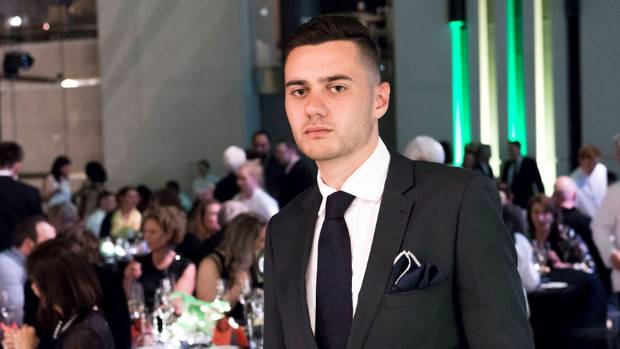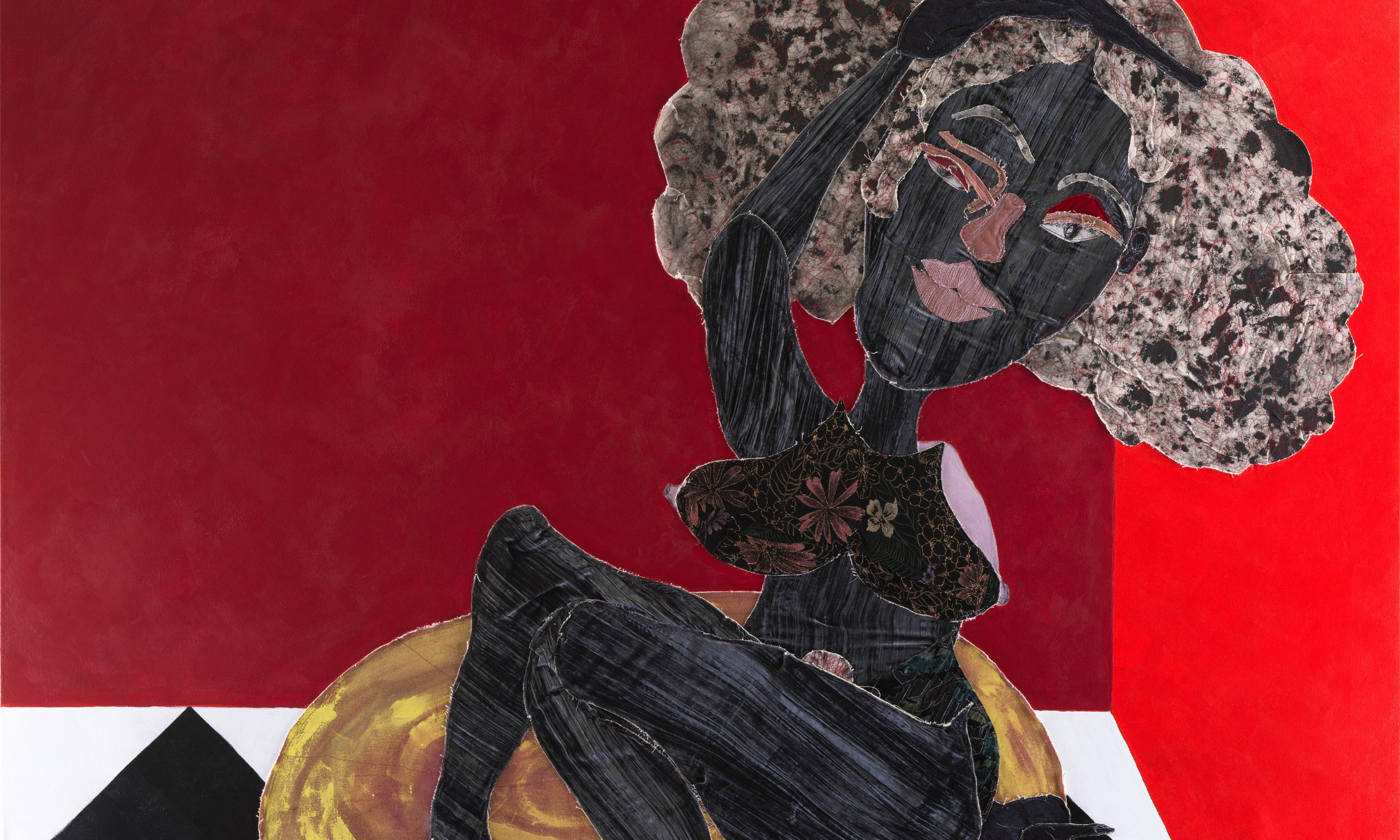
Luke Willis Thompson’s Turner Prize nomination is a blow to artists of colour
Rene Matic
03 May 2018
I was on my way to university on Thursday morning when a tweet came to my attention that revealed Luke Willis Thompson had been nominated for the Turner Prize.
The pride that had been swimming in my stomach from the moment Lubaina Himid took home the prize in December last year quickly sank. Himid, whose work so eloquently interrogates colonialism, racism and institutional invisibility, was not only the oldest but also the first black woman to ever win the Turner Prize since it was founded in 1984 (wild).
As a womxn of colour studying art, seeing Himid take the prize made me clench my fist and hold it firmly above my head – one small step for society, one giant leap for the art world, or so I had hoped. After receiving the news on Thompson being shortlisted, I clench my fists again, but this time not with pride. This is a blow. It didn’t take long for the art world to get back on its bullshit.
“Thompson has not just made one or two pieces about racial violence – almost all of his art centres on it. It is his obsession”
I first became familiar with Thompson’s work when he gave a lecture during my first week studying Fine Art at Central Saint Martins, where all my fears and doubts about the art industry were confirmed. His body of work was a list of instances of racist violence and black trauma, which he had polished and carefully composed to be consumed by the predominantly white, middle-class gaze of the art world. Thompson has not just made one or two pieces about racial violence – almost all of his art centres on it. It is his obsession. Whilst Thompson does not identify as white due to his mixed European and Fijian heritage, Thompson is white-passing, meaning that he benefits from white privilege within our white supremacist society. In short, Thompson is a white-passing male, making work and profiting off the violence and suffering of black and marginalised people.
When asked during the lecture why he didn’t put descriptions next to his work, he argued that it isn’t his job to educate people. I wondered then, if it is not your job to educate people, then whose job is it? And if you wish to take these painful and deeply distressing events as your subject matter, but are not doing so in order to educate, what exactly is the intention of this work? He made no reference to supporting the communities which he was studying, and did not seem concerned whether his art or his practice was of benefit to those whose experience it leeches upon. For me, Thompson’s work does not feel like a sensitive awareness-raising project, but a process of extraction, sensationalism and commodification. When asked about his fixation on the black experience, he stated, “I make sure I do my research so that nobody can call me out”. Thompson knew his work caused tension and provoked skepticism, but he persisted anyway, attempting to outwit his critics rather than heed their concerns, to press on in spite of criticism, rather than to learn from it.
The piece of art he’s been shortlisted for is his 2017 work, Autoportrait, which profiles Diamond Reynolds, the girlfriend of Philando Castile, who was shot by police during a routine traffic stop in Minnesota in 2016. When speaking about Diamond, Thompson very proudly boasted that he was the only artist that she had allowed to film her. This piece echoes his work Cemetery of Uniforms and Liveries, which comprised silent, black and white video portraits of black men, on which Karen Archey wrote:
“Thompson’s film…brings to mind the intimately intertwined actions of the camera and the gun: ‘shooting’. As Susan Sontag wrote in On Photography (1977), ‘[t]here is something predatory in the act of taking a picture […] Just as the camera is a sublimation of the gun, to photograph someone is a sublimated murder.’ In its directness, Thompson’s film requires us to take an extended, perhaps voyeuristic, look at these individuals – alive and on view – at a time when a disproportionate number of unarmed black men are being killed or incarcerated.”
On reading this, I was disturbed that anyone would so insensitively equate the shooting of a camera to the shooting of a gun with reference to police brutality. But let’s say we are to take Thompson’s work in this way, is it appropriate that a white-passing artist has “murdered” a black man for his art? Is that what this analogy is alluding to? I am uneasy with the power dynamic between Thompson and his subjects, which is captured perfectly, if unwittingly, in Archey’s analogy. It is a “predatory”, calculated and “voyeuristic” gaze through which he captures these people and their stories, and shares them with us – a gaze which people of colour know all too well.
Voyeurism is defined as “deriving or relating to enjoyment from seeing the pain or distress of others” – a term that Archey here uses to celebrate Thompson’s depiction of black suffering. Dana Schutz’s painting Open Casket (a white artist’s abstract interpretation of Emmett Till’s dead body) that was included in the 2017 Whitney Biennial springs to mind. The inclusion of this work prompted the infamous open letter penned by Hannah Black, who called for the removal of the work, stating that “those non-Black artists who sincerely wish to highlight the shameful nature of white violence should first of all stop treating Black pain as raw material”. The piece also inspired a performance artist to protest the work’s inclusion by standing in front of it wearing a t-shirt that read “BLACK DEATH SPECTACLE”.

via Twitter
Hannah Black’s letter prompted many critics to come running with cries for artists’ right to freedom of speech and creativity, an argument which no doubt many will use to let Thompson off the hook. However, with our sordid history of white violence against black bodies being celebrated as sport and entertainment – should it really be non-black artists telling these stories? And are we really still prioritizing the “creative freedom” of non-white artists over the sensitive and painful histories and realities of people of colour?
In 2016, Thompson temporarily took the tombstones of indentured migrants that he “discovered” in Fiji, and installed them in a white-walled gallery in Auckland. John Hurrell writes, “Buried without even the dignity of a name, these laborers (their lives) are generally ignored and forgotten”. Is this to suggest that by temporarily installing their nameless gravestones in a gallery is to appreciate and pay attention to them? This reads more like a meaningless and condescending ode to me.
Another celebrated work of Thompson’s was his New Museum Triennial performance in 2015 that involved “taking visitors out of the gallery where they followed a black man wearing a hoodie and backpack into less affluent areas of Manhattan”. In essence, the artist took an audience of (I’m assuming) predominantly middle-class YT’s on a school trip to discover how the other half lives. If Thompson’s intention was to make a comment on privilege and entitlement then I commend his success – temporarily turning the ghetto into the gallery is a fire-fueled example of how privilege operates. And once the audience returns to the gallery? “Welcome back to the safety and security of the white-washed, white-walled space, here is your complimentary white wine and hand sanitiser, I hope you had a voyeuristic adventure!”
“Are we really still prioritizing the ‘creative freedom’ of non-white artists over the sensitive and painful histories and realities of people of colour?”
There are many artists of colour out there whose work interrogates themes of racial violence and the black experience in the UK such as Mary Evans, Donald Rodney, Eddie Chambers, Claudette Johnson and a whole generation of emerging artists (see artists exhibited in Black Blossoms featured in the BBZ BLK BK); and Arthur Jafa, Sondra Perry, Kara Walker, Glenn Ligon, Melvin Edwards and Daryl Elaine Stenvoll-Wells elsewhere in the world, so why do we need to focus on a white-passing man’s hot take on these issues? Why is it that myself and other artist of colour experience the palpable rolling of eyes when we “make everything about race” in our practices, yet artists like Thompson get lauded as artistic geniuses exploring the most “pressing political issues of today”? Because white voices and perspectives are still prioritised in the art world… even when those perspectives are about issues that specifically affect communities of colour.
My anger is apparent and there is hurt in my sarcasm. I feel let down, exhausted. For this man to be celebrated by the art world for profiting off the lives and deaths of black people (if he wins, the award is £25,000, and he gets an ample £5000 just for making the shortlist) is like a blunt knife in the backs of the artists of colour who are working 10,000 times harder than their white counterparts simply to be heard, recognised and celebrated for telling their own stories. I am not saying that white artists shouldn’t approach these topics if they feel so compelled to do so, but if you are making a living out of other people’s pain, wouldn’t it make sense to at least give back to the communities that you are benefitting from? Or alternatively, instead of using your platform to give us a voice, maybe you could just pass the mic?
**the first paragraph of this article was edited on 28/09/18









